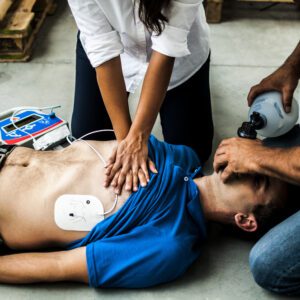Course Content:
- Introduction & Course Objectives
- HIQA Fire Handbook discussed. Including legal compliance
- Changing needs of Residents
- The importance of keeping fire-doors closed (or closing them) to prevent the spread of fire, heat and smoke
- What to do on discovering a fire
- How to raise the alarm and what happens then
- How to read the fire detection and alarm system panel
- What to do upon hearing the fire alarm
- The procedures for alerting other staff, residents and visitors including, where appropriate, directing them to exits
- The arrangements for calling the fire and rescue service
- The identification and use of protected areas for phased evacuation
- The evacuation procedures for everyone in the centre to reach an assembly point at a place of total safety, in particular the role of residents
- The evacuation procedures for residents who require assisted escape, to reach an assembly point at a safe place
- How to assess the needs of a resident in the event of an evacuation
- Resident handling where staff are required to assist in the evacuation of residents and training in the use of any evacuation aids if required
- The location, selection and practical instruction in the use of firefighting equipment
- The location of escape routes, especially those not in regular use
- How to open all emergency exit doors
- Where appropriate, how to stop machines, appliances and processes and isolate power supplies in the event of a fire
- The reason for not using lifts (except those specifically installed or nominated, following a suitable fire risk assessment, for the evacuation of people with a disability)
- How to reduce risk when working with or storing highly flammable and explosive substances and bottled or piped oxygen
- The importance of general fire safety, which includes good housekeeping
- Fire drills, with and without residents’ involvement
- Procedures to be followed should the clothes of a resident catch fire
- Fire extinguisher use
- Q&A
- Conclude & Follow Up Process


















